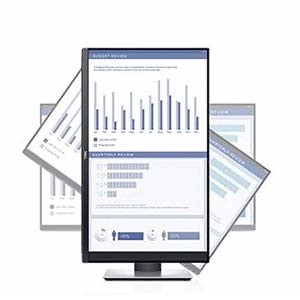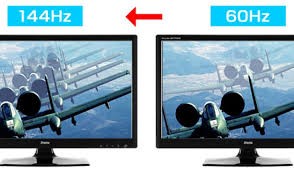If you have decided to buy a new computer monitor but you don’t know where to begin, then you must start by learning about all the core features first.
There are so many monitor brands out there with so many different products. Some are cheap, while others are expensive. What makes certain monitors budget, while others expensive? Why do some monitors cost beyond $500 range? The answer to these questions are crucial if you want to make an informed decision.
There are many features. The features you choose depend on what you really want. The good news is that whether you want a monitor with speakers, a monitor with a fast response time, or a monitor with a large resolution, you can find them all.
Design Related Specs
When it comes to design, there are two important features to consider.
Size: This is quite obvious. The most common sizes are 22-24 inch. However, with time, bigger screens have become quite inexpensive. You can find 27 inch and even 30 inch monitors at an affordable price tag. You must now that bigger size does not mean higher resolution!
Aspect Ratio: While a few years back knowing the aspect ratio of the screen did not matter, however, with ultrawide monitors taking over the market, knowing this is crucial. Conventional monitors have an aspect ratio of 16:9 i.e 16 units in length vs 9 units in height. The ultrawide monitors, on the other hand, have an aspect ratio of 21:9.
Slim Bezels: Slim bezels are crucial for two reasons. First, they enhance the look of the display, secondly slim bezels are sort of like a pre requisite for a good multiple monitors setup. The slimmer the bezels, the better would be the continuity between two screens.
Ergonomic Stand: The second most important consideration is how adjustable the stand is. An ergonomic stand allows the monitor to tilt, swivel, rotate and allow height adjustability.

Curve Monitors: Curve monitors are no longer a feature for the rich. However, the question is, are they worth it? Many people find that they are more immersive and particularly great for multiple monitor setups. However, not everybody is happy with the narrower viewing angles – you have to be sitting in a particular focal point to enjoy the immersion.
Core Features
These are the most important features in a display and they are directly related to how much the monitor costs.
Resolution: Resolution is the amount of pixels you have on the screen. Higher pixels mean sharper images. In terms of productivity, higher resolution means you can fit more windows on the screen. Of course, this implies that the higher the resolution, the more expensive a monitor is. You can find resolutions ranging from Full HD all the way to 4K. 4K is four times HD resolution.
Panel Type: There are three common panel types: IPS, TN and VA – IPS being the most common. IPS panels offer widest viewing angles and good color reproduction. TN panels have been in the market for longer than IPS panels. These offer the fastest response times and therefore they are ideal for gaming. VA panel are rare and are mostly featured in relatively expensive monitors. These offer the best of the two panels i.e wider viewing angles, good colors and a fast response time.
Response Time: Response time is directly related to the ghosting effect. The slower the response time, the worse will be ghosting effect on the screen. The fastest you can find is 1 ms whereas the average is around 4-5 ms.

Refresh Rate: Refresh rate is the amount of time the screen updates the content. The higher the refresh rate, the faster it updates the content, thus making the animation smoother. Higher refresh rate monitors are expensive. This feature is mostly sought by gamers. Note that although refresh rate and frame rate are directly related, they are not the same. Conventional monitors have 60 Hz refresh rate. The more expensive monitors have from 120-144Hz refresh rate.

Color Accuracy: Professionals interested in color reproduction tend to look for monitors that cover 100% of sRGB colour gamut, have true 10 bit panels and come factory calibrated with Delta E < 2.
Connectivity: This must be the starting point when looking for a monitor. You have to make sure that your computer has certain ports – this is especially important if you have an older system. Most newer monitors these days tend to offer newer ports like HDMI or DP. If you only have a DVI or VGA port on board only, you will need to spend extra on adapters to interface with the monitor. Therefore, you must be careful.
Conclusion
These were some of the features that one commonly tends to study when buying a monitor. If you have small budget, you are limited in your choice. However, if you want to buy an expensive monitor then you must study all the features carefully.



